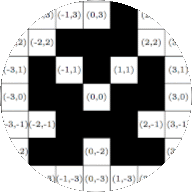Strategy 12.2. Comparing Shades of Grey.
When comparing the two shades of grey given by the hex triplets \(\xx a_1 a_2 a_1 a_2 a_1 a_2\) and \(\xx c_1 c_2 c_1 c_2 c_1 c_2\) we first compare the first digits, that is the sixteens. If \(a_1>c_1\) then the shade of grey represented by \(\xx a_1 a_2 a_1 a_2 a_1 a_2\) is lighter than the shade of grey represented by \(\xx c_1 c_2 c_1 c_2 c_1 c_2\text{.}\) If \(a_1<c_1\) then the shade of grey represented by \(\xx a_1 a_2 a_1 a_2 a_1 a_2\) is darker than the shade of grey represented by \(\xx c_1 c_2 c_1 c_2 c_1 c_2\text{.}\)
If \(a_1=c_1\) we compare the ones digits \(u\) and \(v\text{.}\) If \(a_1=c_1\) and \(a_2>c_2\) then the shade of grey represented by \(\xx a_1 a_2 a_1 a_2 a_1 a_2\) is lighter than the shade of grey represented by \(\xx c_1 c_2 c_1 c_2 c_1 c_2\text{.}\) If \(a_1=c_1\) and \(a_2<c_2\) then the shade of grey represented by \(\xx a_1 a_2 a_1 a_2 a_1 a_2\) is darker than the shade of grey represented by \(\xx c_1 c_2 c_1 c_2 c_1 c_2\text{.}\)

